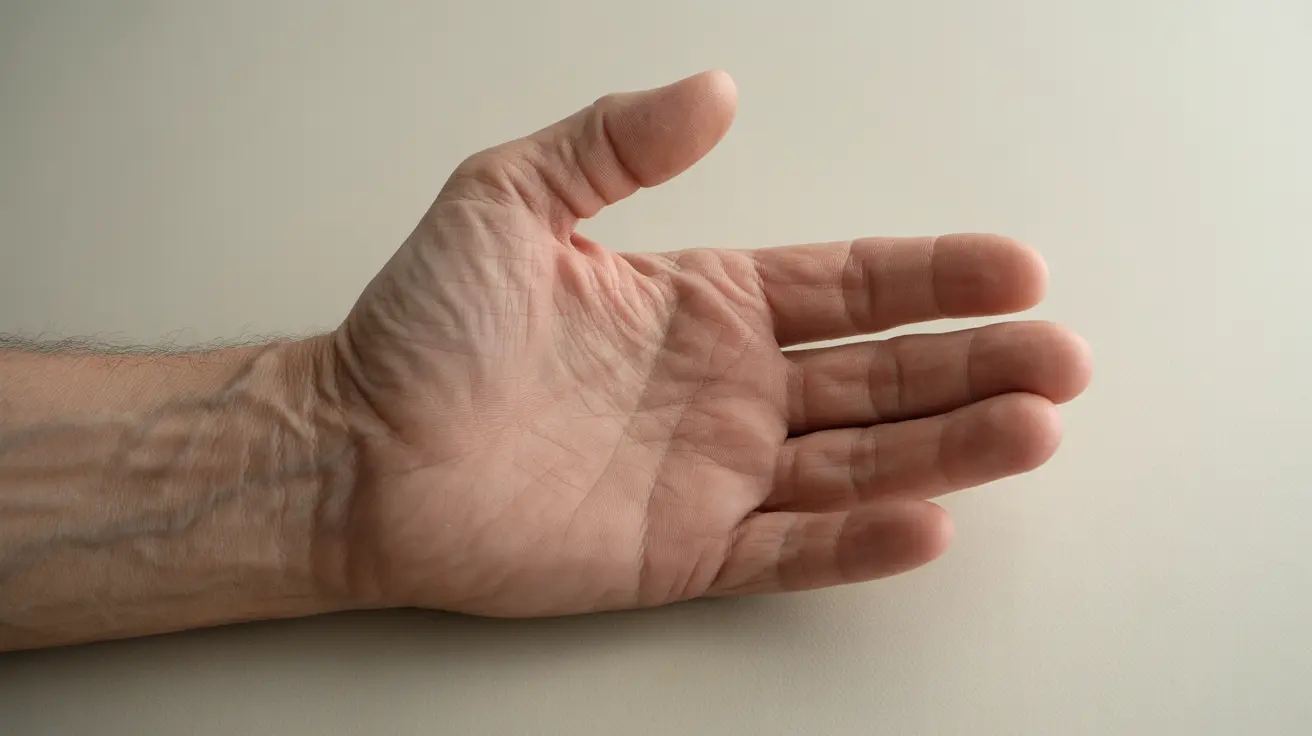Discovering knots or lumps in your hands can be concerning, but understanding their causes and available treatments can help you make informed decisions about your health. These firm lumps, which often develop in the palm's connective tissue, can affect hand function and mobility if left untreated.
While some hand knots may be harmless, others can indicate underlying conditions that require medical attention. This comprehensive guide will explore the various causes, treatment options, and preventive measures for hand knots.
Common Causes of Hand Knots and Lumps
Hand knots can develop for several reasons, with Dupuytren's contracture being one of the most common causes. This condition occurs when the connective tissue under the skin becomes unusually thick and tight, forming visible lumps and cords in the palm.
Other potential causes include:
- Ganglion cysts
- Tendon nodules
- Giant cell tumors
- Trigger finger nodules
- Rheumatoid nodules
Identifying Hand Knots and Their Characteristics
Understanding the characteristics of hand knots can help determine their cause and appropriate treatment. Most hand knots begin as small, firm lumps beneath the skin's surface, often developing gradually over time.
Location and Appearance
Hand knots commonly appear in specific areas:
- Palm of the hand, particularly at the base of fingers
- Along finger joints
- Near the wrist
- Around tendons and ligaments
Signs and Symptoms
The manifestation of hand knots can vary, with common symptoms including:
- Firm, palpable lumps under the skin
- Gradual finger contracture
- Limited range of motion
- Difficulty performing daily tasks
- Occasional tenderness or discomfort
Treatment Options for Hand Knots
Treatment approaches range from conservative management to surgical intervention, depending on the underlying cause and severity of symptoms.
Non-Surgical Treatments
Several non-invasive options may help manage hand knots:
- Physical therapy exercises
- Steroid injections
- Enzyme injections
- Splinting and bracing
- Massage and stretching techniques
Surgical Interventions
When conservative treatments aren't effective, surgical options may include:
- Needle aponeurotomy
- Limited fasciectomy
- Complete fasciectomy
- Radiation therapy (in specific cases)
Prevention and Management Strategies
While not all hand knots can be prevented, certain measures may help slow their progression or reduce risk:
- Regular hand exercises
- Maintaining good hand hygiene
- Protecting hands during activities
- Regular monitoring of any changes
- Early intervention when lumps are noticed
Frequently Asked Questions
What causes hard lumps or knots in the palm of the hand? Hard lumps in the palm often result from conditions like Dupuytren's contracture, ganglion cysts, or tendon nodules. These can be caused by genetic factors, repetitive hand movements, or underlying medical conditions.
Is surgery the only way to treat thick cords and knots in hands, or are there non-surgical options? No, surgery isn't the only treatment option. Non-surgical treatments include enzyme injections, steroid injections, physical therapy, and splinting. However, severe cases may ultimately require surgical intervention for optimal results.
Can hand lumps or Dupuytren's contracture be painful, or is it usually painless? Most hand knots, particularly those associated with Dupuytren's contracture, are typically painless. However, some people may experience tenderness, aching, or discomfort, especially during activities that strain the affected area.
Which fingers and joints are most commonly affected by Dupuytren's contracture, and what does this look like? The ring and small fingers are most commonly affected, with lumps typically appearing at the base of these fingers in the palm. The condition often progresses to form visible cords that can pull fingers toward the palm.
Are there ways to prevent or slow down the progression of knots and contractures in the hand? While complete prevention may not be possible, early intervention, regular hand exercises, protecting hands during activities, and maintaining good hand health may help slow progression. Working with a healthcare provider to monitor changes is also important.




